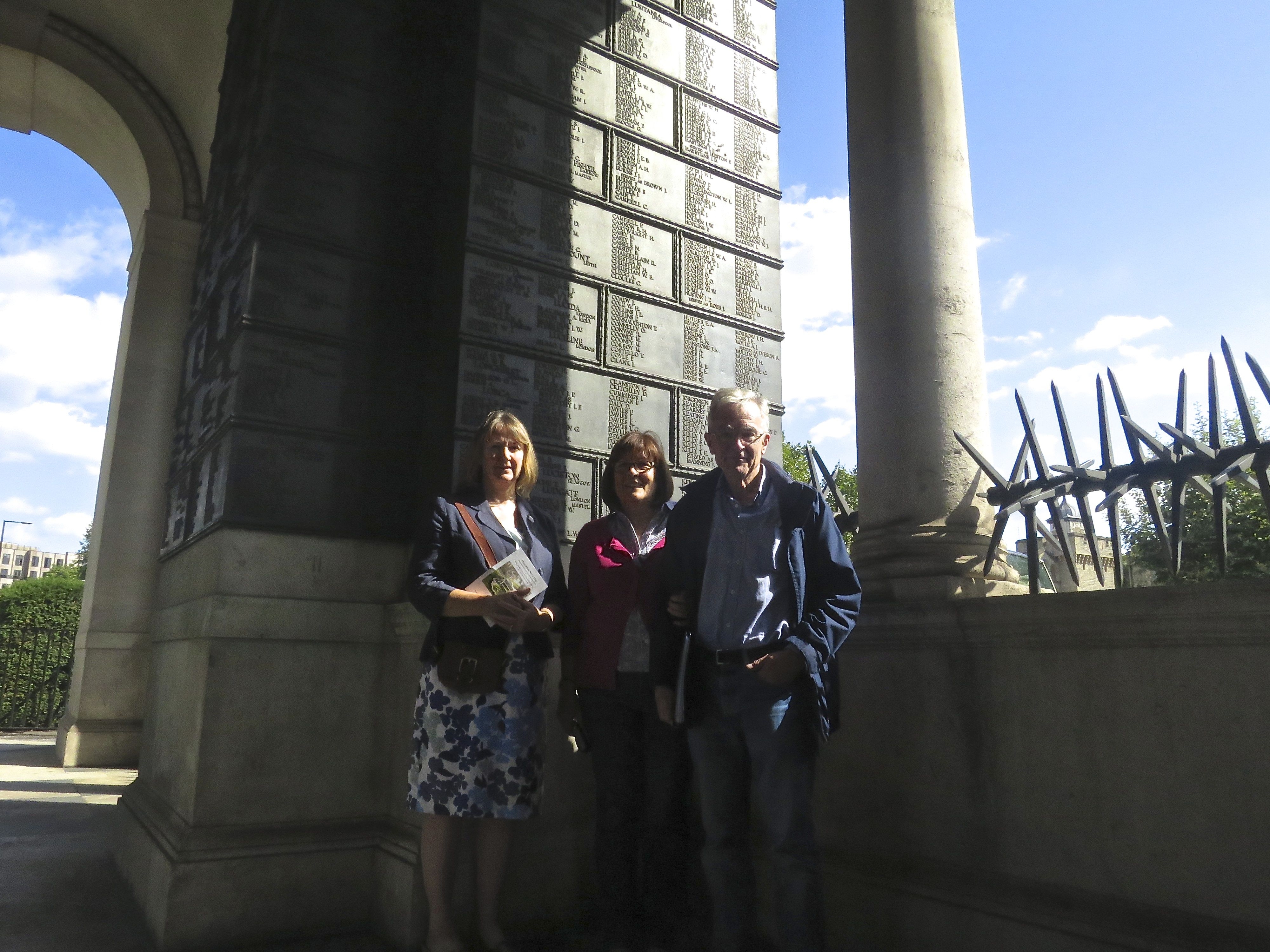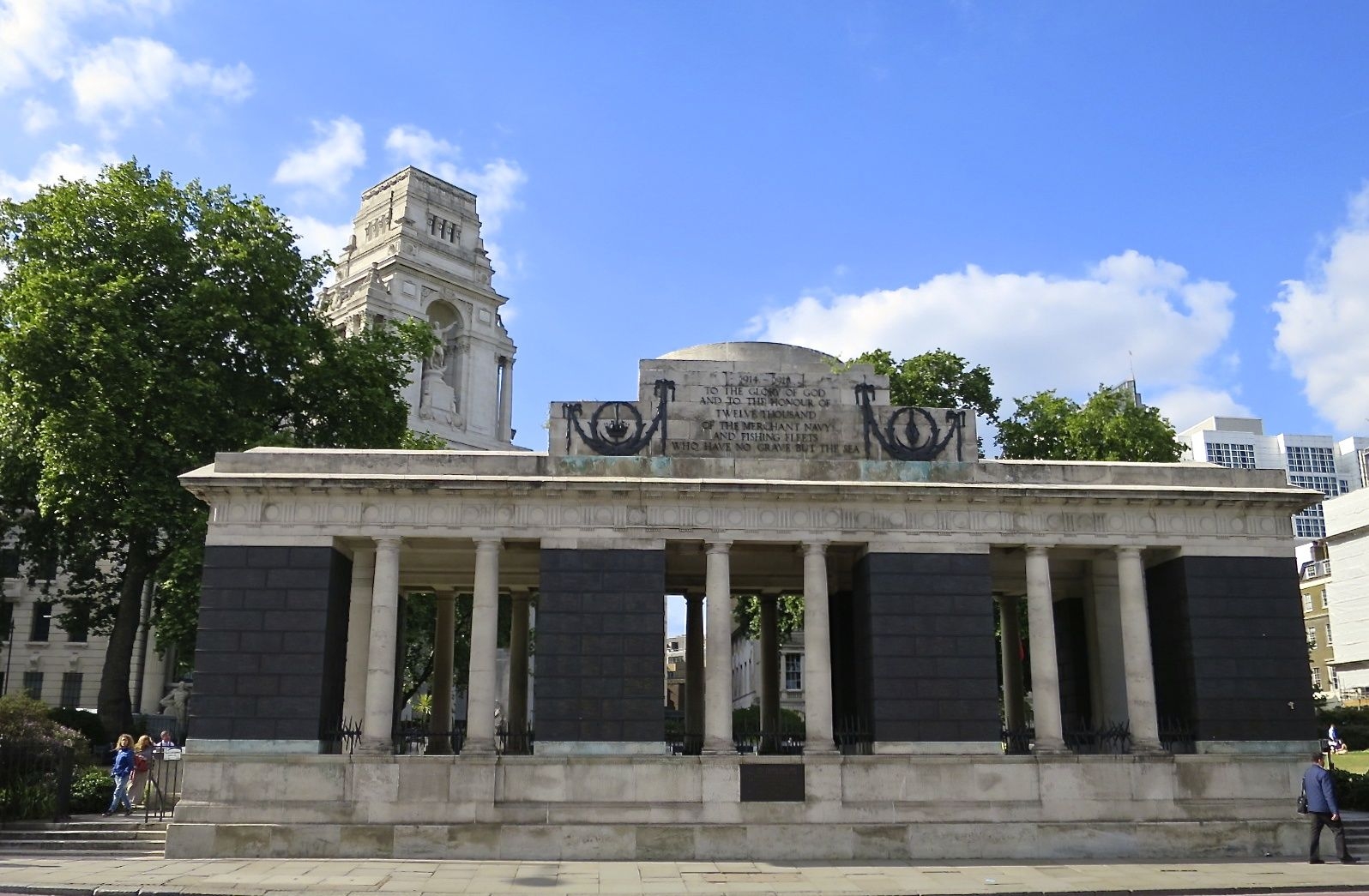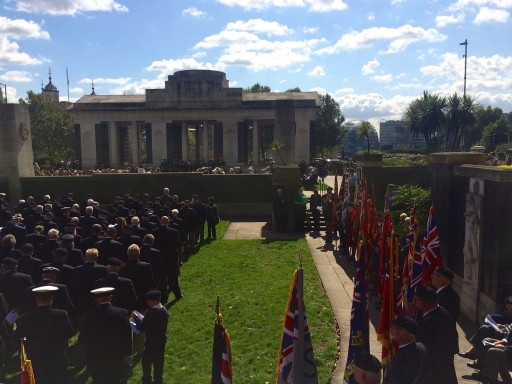The sinking of the transatlantic liner Lusitania 100 years ago was remembered at the UK’s Merchant Navy Day commemorative service in London on September 6th 2015.
Some descendants of those who sailed on the Cunard flagship’s last voyage travelled to the Merchant Navy Memorial at Tower Hill for the annual tribute to civilian seafarers killed in conflict.
More than 350 crew members of the Lusitania, torpedoed by a German U-boat in 1915, are among the thousands of names from both world wars commemorated on the monument opposite the Tower of London.
There was a reminder that many serving on the liner were drawn from trades not immediately associated with the sea, or front line warfare: Assistant butcher; baggage master; barber, boots; confectioner; matron; plumber; printer; scullion, soup cook; stewardess; steward’s boy; third baker; typist; vegetable cook; 1st, 2nd and 3rd class waiters.
“Not amongst those perhaps expected to be represented on a war memorial, nor the age range, from 14 to 65,” noted Roger Hoefling in his reading to the service.
 Descendants of Lusitania survivors beside the names of the liner’s crew commemorated on the Merchant Navy Memorial. Cathy Tyrrell (left) is the granddaughter of Avis Dolphin, a 12-year-old who was rescued. Richard Woods (right), pictured with his wife Bronwen, is from a family who had four relatives on the Lusitania, all of whom survived. His mother, Nancy Wickings-Smith, was an eight-month old baby travelling with her parents and Mr Woods’ great uncle (Photo: Centenary News)
Descendants of Lusitania survivors beside the names of the liner’s crew commemorated on the Merchant Navy Memorial. Cathy Tyrrell (left) is the granddaughter of Avis Dolphin, a 12-year-old who was rescued. Richard Woods (right), pictured with his wife Bronwen, is from a family who had four relatives on the Lusitania, all of whom survived. His mother, Nancy Wickings-Smith, was an eight-month old baby travelling with her parents and Mr Woods’ great uncle (Photo: Centenary News)
The Merchant Navy Day service, organised by the Merchant Navy Association, includes a different first-hand account each year of an action involving a ship remembered on the walls of the Tower Hill memorial.
This year’s focussed on the story of Margaret Haig Thomas, who was urged to jump from the decks of the rapidly listing Lusitania. She survived despite being sucked underwater as the liner went down.
RMS Lusitania sank 18 minutes after the attack by U-20 off the Irish coast on May 7th 2015. Twelve hundred people died. Around 770 survived.
The Merchant Navy Memorial, at Tower Hill in London, was designed by Sir Edwin Lutyens, the architect responsible for many of the most notable British First World War memorials.

The Merchant Navy Memorial, seen from the road running alongside the Tower of London (Photo; Centenary News)
The original monument was opened by Queen Mary in 1928 in tribute to 12,000 WW1 merchant seafarers who have no known grave but the sea.
That same year, King George V decreed that Britain’s mercantile marine should be known as the Merchant Navy in recognition of its sacrifice during the Great War.
A later extension commemorates almost 24,000 casualties of the Second World War.
More about the Lusitania centenary commemorations held in 2015 can be found here in Centenary News.
There’s a closed Facebook group for descendants of passengers and crew on the Lusitania. ‘RMS Lusitania Association of Relatives and Researchers’, now has more than 200 members.
Merchant Navy Day was instituted in the year 2000 with the aim of improving awareness of the UK’s reliance on the sea.
Source: Merchant Navy Association/Roger Hoefling
Images: Centenary News
Posted by Peter Alhadeff, reporting for Centenary News from Tower Hill
